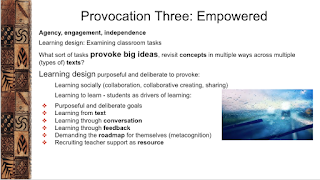Concept Based Curriculum Learning With Kate
One of our school wide professional development areas of focus is about Concept Based Curriculum. We have been working with Kate as a staff and within our hubs to develop our own understanding and ability to plan and implement this. The concept for the year is: Thriving communities have active members, each with roles and responsibilities.
This is an example of our learning and work at hub level:
What is working well?
We have made a start. The discussions have been good. Some kids seem to have grasped the ideas and some not so much. Sharing of activities has been good.
Next steps-Look at key competencies of participating and contributing. What could our role/ responsibility be?
Looking at roles and responsibilities. Starting at home level first.
Active- How will be get understanding of this? Look it up. Have images on cards that require children to actually move. Have a look at what is active and what is inactive? Constant use of the word and the same language. Great links to be there.
Don’t try to do too much at once. Go through the active part for a couple of weeks and then introduce thriving. Competencies need to be developed.
Have a look at the people who make up our community. Can look at the obvious ones, Liz etc and why a plaque was made. Look at why we would have a plaque for some people. How have they contributed? How do they participate? What do they do? People who are active in our community. Bring in other people when we want to venture out more. Volunteers, sports clubs, police, church people, St Johns etc.
What do we do to participate and contribute within our school community? It’s up to us to be active, not being told to do a job. What could we do to be more active?
Questions:
To encourage student thinking, use question stems to discuss and direct. Prompts can be used when having a visitor etc.
Lots of skill building needs to be done as far as being skilled to ask questions.
Take a Moment-
We have a school copy of this book. Good for a point of reflection.
Link to PDF-In whole school inquiry folder. We need to get kids thinking.
Have you used any visual thinking organisers? Just KWL and is/isn’t.
To motivate thinking, children can use what if...to discuss and pose questions such as... What if everybody littered? What if we didn’t have a caretaker?
Freeze frame-can show what active means.
Characteristics of people who have contributed to communities.
Object walk-Variety of items around the room, kids wander around and record ideas abo9ut communities.
True/False/Not sure statements. Read out a series of statements. Does this mean you are active? Yes, no, not sure, Could hold cards up to indicate thinking.
Effects wheel- use like spokes of a wheel. Write in the middle of a piece of paper “What is the effect of contributing to a community? Then links off each idea with the effect of that. Good way for kids to think of ripple effect from one big idea.
Example:
• Engage in professional learning and adaptively apply this learning in practice.
• Be informed by research and innovations related to: content disciplines; pedagogy; teaching for diverse learners, including learners with disabilities and learning support needs; and wider education matters.
• Actively contribute, and work collegially, in the pursuit of improving my own and organisational practice, showing leadership, particularly in areas of responsibility.

































